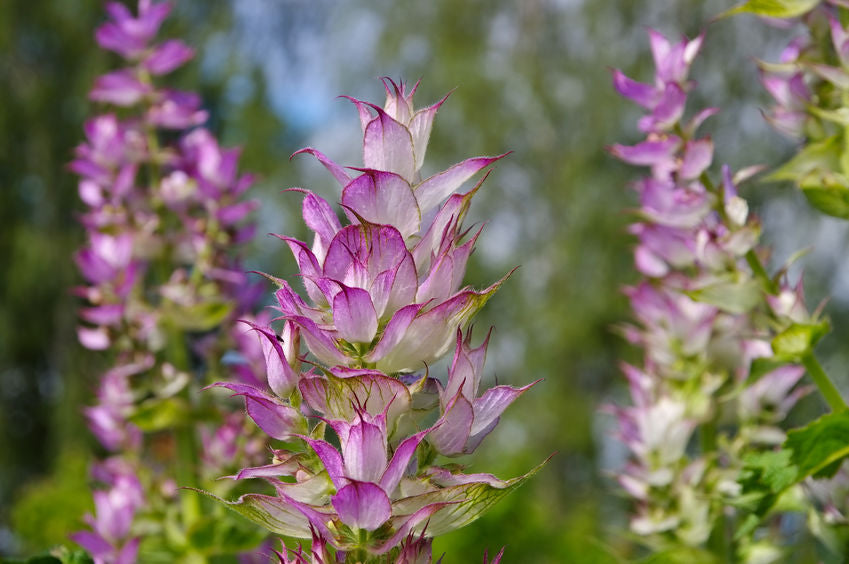Clary sage (Salvia sclarea)
Clary sage is a large relative of common sage. It is a biennial mint plant with egg-shaped, slightly toothed, and heavily hairy leaves. Its aromatic, spicy scent makes it popular not only for medicinal purposes but also as a spice and flavoring.

Cultivation and propagation – what should you pay attention to?
The plants self-seed in warm climates. In the garden, sowing begins in summer or fall. The seeds remain viable for about three years. Severe frost or excessively wet winters will kill the plant. Therefore, it is recommended to grow the plant in a pot during the first year and allow it to overwinter in a bright, frost-free location. In spring, the undemanding plant can then be planted in the garden, where it will bloom in early summer. Clary sage prefers well-drained, sunny, and sandy soil. If the soil is too dry, the plant must be watered.
Use – What recommendations for herbal cooking?
Young, fresh leaves and flowering shoots make (sweet) dishes and drinks more aromatic and easier to digest. Sage is also excellent for making liqueur. The fresh, tender flowers are also perfect for garnishing dishes.
Hildegard von Bingen was already aware of the healing properties of this plant. Salvia sclarea is said to have antibacterial, analgesic, antispasmodic, and digestive properties. Teas and tinctures based on clary sage can be used to treat digestive disorders, gynaecological issues, gingivitis, and many other ailments.
Botanical – What kind of plant is this?
Salvia sclarea is native to southern Europe, the Orient, and North Africa. This explains its preference for sunny locations and sandy soils. The leaves are felty, broad, and heart-shaped. The white-violet, pink, or light blue flowers appear on candle-like inflorescences between June and August. The plant has a pleasant orange or grapefruit scent and grows up to 80 cm tall.
TEXT: Juliane Michel




































































































